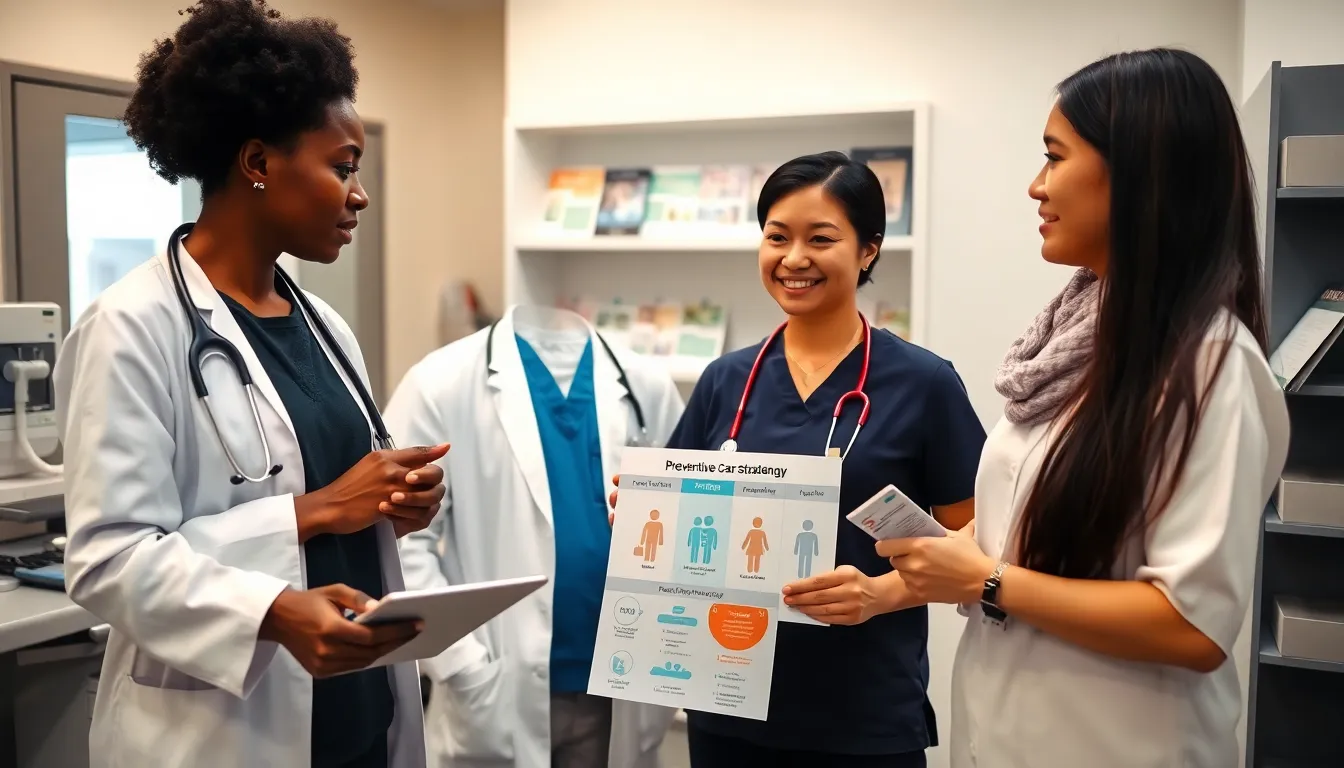When it comes to health care, some folks might think preventive care and primary care are just fancy terms for the same thing. Spoiler alert: they’re not. Picture them as siblings with distinct personalities, one is all about keeping you out of trouble while the other is your go-to when you’ve already stumbled into a mess. This article will shed light on the differences between preventive care and primary care, helping you choose the right path for your health needs. So, buckle up. It’s time to dive headfirst into the world of health care services.
Table of Contents
ToggleUnderstanding Preventive Care

Preventive care is like putting a security system in place for your health. The main goal? Stop problems before they even start. This proactive approach encourages habits that keep you healthy and wards off diseases, often through routine screenings and vaccinations.
Types of Preventive Care Services
Preventive services include a variety of actions suited for different age groups and health statuses. Common types involve:
- Vaccinations: These are crucial for preventing contagious diseases.
- Screenings: Think blood tests, cholesterol checks, and mammograms.
- Counseling: This might cover lifestyle changes like smoking cessation or diet improvement.
- Regular Check-Ups: These help monitor ongoing health and catch any potential issues.
Benefits of Preventive Care
The perks of preventive care are like finding an extra fry at the bottom of the bag. Who doesn’t love that? Here’s what it offers:
- Cost Savings: Investing in preventive care often results in lower health care costs down the road. Nobody wants to face a hefty hospital bill after a preventable emergency.
- Improved Quality of Life: Regular screenings can detect issues early, leading to better outcomes and allowing individuals to maintain their daily activities.
- Enhanced Health Awareness: Engaging in preventive care cultivates a deeper understanding of one’s health, empowering informed decisions.
Understanding Primary Care
Now, let’s shift gears to primary care, your main health care system navigator. While preventive care focuses on avoiding health issues, primary care steps in when things go awry and offers ongoing support. It’s typically the first point of contact for patients with health concerns.
Roles and Responsibilities of Primary Care Providers
Primary care providers (PCPs) are like your health care central station. They manage a multitude of responsibilities, such as:
- Diagnosis: Identifying conditions based on symptoms.
- Treatment Plans: Crafting tailored approaches to address health issues.
- Referrals: Sending patients to specialists when specific expertise is needed.
- Continuous Care: Monitoring chronic illnesses and coordinating overall health management.
Benefits of Primary Care
The benefits of having a dedicated primary care provider can’t be understated:
- Holistic Care: This is about treating the whole person, not just a condition. A good PCP considers your physical, emotional, and social well-being.
- Long-Term Relationships: Building a rapport with a primary care provider leads to better health outcomes and a trusting environment.
- Coordination of Care: This helps streamline health services and ensures all your healthcare needs are met.
Comparison of Preventive Care and Primary Care
Understanding the distinctions between preventive care and primary care can be as satisfying as finding the last piece of a jigsaw puzzle. Each plays a unique role in the healthcare continuum.
Key Differences in Focus and Approach
Preventive care emphasizes averting health problems proactively, while primary care is more reactive, responding to existing health issues. Essentially, preventive services are forward-thinking, aiming to maintain wellness, whereas primary care tends to address concerns and provide treatment.
Impact on Patient Health Outcomes
The interrelation between preventive care and primary care is clear. Engaging in preventive services can lead to healthier patients who require less intervention from primary care providers. Regular check-ups can catch early signs of disease, eventually reducing the burden on primary care.
Choosing Between Preventive Care and Primary Care
So, when should one consider preventive care versus primary care? This decision can be life-enhancing if approached correctly.
When to Visit Preventive Care Services
Opt for preventive services when it’s time for your routine screenings or vaccinations, or if you’re looking to maintain your health proactively. If you’re under a certain age or lack chronic health issues, preventive care is your best friend.
When to Seek Primary Care Help
Primary care is your go-to when symptoms arise, or if you’re managing ongoing health issues. It’s ideal for those who require medication adjustments or have complex health conditions that need close monitoring.
